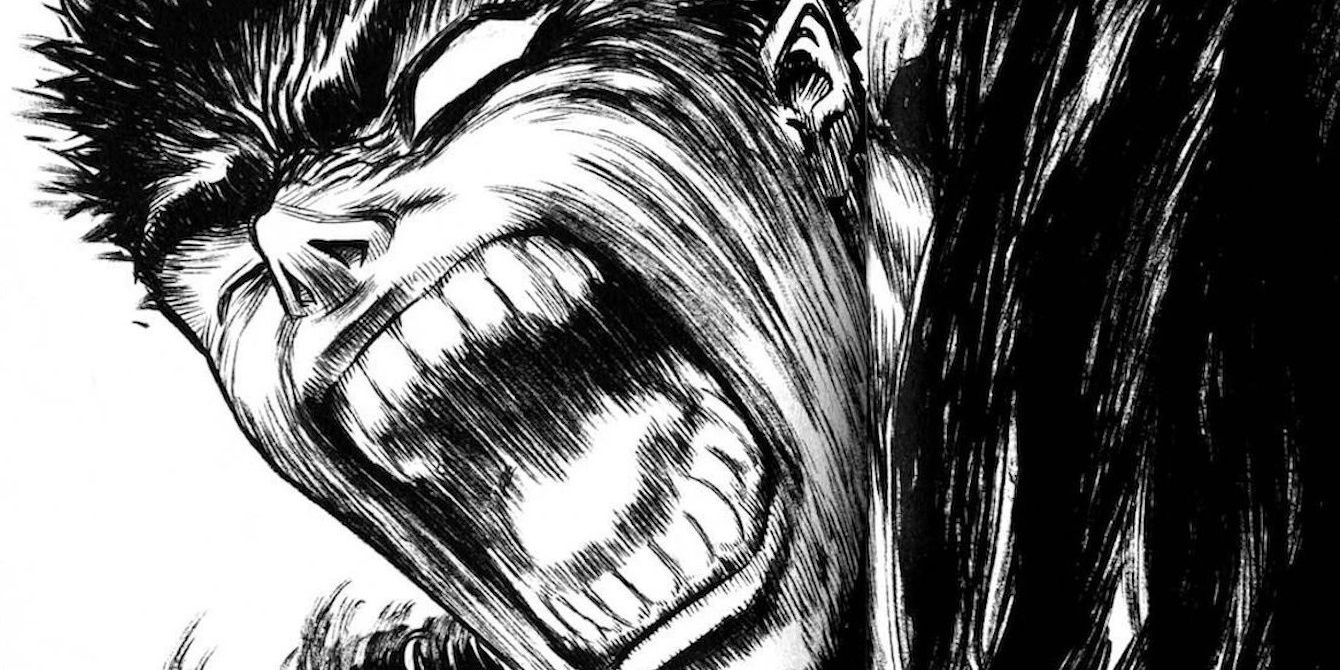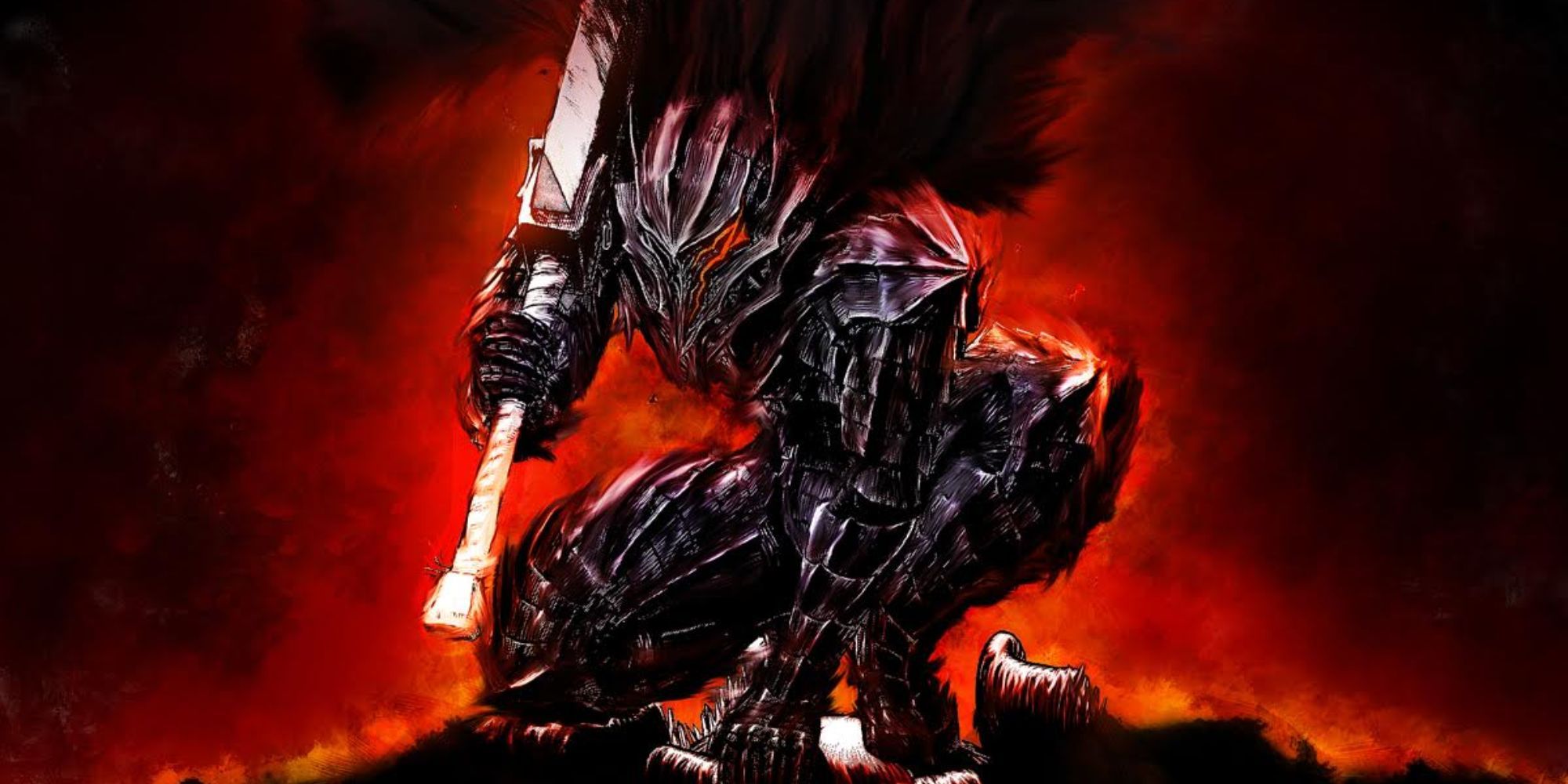The complex layers to Guts’ persona are one of the many things that make him such a compelling protagonist in Kentaro Miura’s Berserk. Mediating between emotional extremes, the inner conflict within his psyche exhibits a dichotomy between his desire to heal and reunite with his lover Casca, and his intense desire for revenge against Griffith and his horrific actions during the Eclipse. This wrath and bloodlust has repeatedly taken shape in the corners of Guts’ mind at various points in Berserk’s storyline following the massacre of the Band of Hawk, in the form of a hellish lupine creature that embodies pure malice.
However, it is important to remember here that these are Gut’s own repressed negative emotions, which have been seething beneath the surface of his mind ever since the trauma he endured at Griffith’s hands. Borne of these very sentiments, the entity, which has been referred to as the ‘Beast of Darkness,’ is fueled by his need for retribution against the Apostles, the God Hand, and Femto. While the companions that come to form his troop serve as a deterrent against it, the Beast is ever lurking in the deepest chasms of his consciousness, threatening to overtake Guts and rid him of what humanity he has left.
The Manifestation of Bloodlust
In the direct aftermath of the Eclipse, Guts went on a two-year rampage against demonkind after declaring war on the Apostles and the God Hand. Although this considerably increased his strength and skill with his sword, despite his missing limb and eye, the inner hatred within him grew to an uncontrollable degree. Guts first encounters the Beast of Darkness after his fighting Rosine during the Lost Children chapter of the Conviction Arc. Manifesting its true form through a host of malevolent spirits plaguing him through the night, the Beast reveals its true intentions and nature as the personification of his inner darkness.
Egging him on to continue killing at any cost, even that of his own sanity, the Beast suggests that Guts can also become a monster just like Griffith, so he can finally exact the vengeance he so craves. Even as Guts begins to see the error of his ways and commit to taking Casca on his travels, the Beast is a constant, menacing presence. Besides his hatred and malice, the Beast also comes to embody Guts’ lust and strong attraction to Casca. At one point, he momentarily succumbs to its impulses when pushed beyond his limits while fighting off spirits. When shown a vision of the Beast ravaging Casca, Guts gives in to his impulses, but quickly snaps out of it and is horrified by his own actions. This act also broke the growing trust Casca was beginning to show for him, marking another setback in their relationship. Shaken to the core on seeing what he is capable of when left unchecked, Guts eventually accepts the help of Farnese, Serpico, Isidro, and Schierke, to prevent it from ever happening again.
Enter The Berserker Armor
After dropping under the radar for a while as Guts grew fond of his traveling companions, the Beast makes its next appearance when he donned the Berserker Armor for the first time. On resorting to this after being heavily wounded by the Apostles attacking Flora’s Spirit Tree Mansion, the armor’s helm takes the shape of the Beast’s maw, overwhelming Guts with its violent od. Under its influence, Guts pushes beyond his limits, to a point where pain is no longer a sensation he is even remotely troubled by. His fighting style changes drastically, become more feral and unhinged, to deal damage without any consideration for self-preservation.
The armor itself greatly enhances his strength, agility, stamina, and aggression to superhuman levels. He is easily able to overwhelm high-ranking apostles with ease, no longer bound by the restraints of his body. This is evident during his confrontation with Grunbeld, where the Great Flame Dragon Apostle initially overpowered. After putting on the Berserker Armor and giving in to it od, Guts defeated Grunbeld in his released state, displaying acts of immense brutality and even biting his opponents — a recurring theme in his use of the armor. Over time, this increased the Beast’s hold over him, to a point where even Schierke finds it difficult to bring him back to his senses. For instance, during his assault on the Sea God, Guts was once again overtaken by the Beast while making use of the armor’s power, and began to move to attack his own companions. Only the timely intervention of the Moonlight Boy created an opening for Schierke to salvage his consciousness from the brink.
Guts’ Inner Conflict
As Guts gradually begins to revert to the version of himself that existed before the Eclipse, regaining his compassion and humanity while finding joy and security in the bonds he shares with his companions, his bloodlust and drive for revenge have started to a take a back seat. His priorities are now more in line with protecting those he loves, especially Casca, who has now regained her memories on the road to recovery. But the intervention of Griffith and the Apostles on Elfhelm has dealt a fatal blow to this, separating the Black Swordsman from the person who served as his greatest moral compass.
What is interesting to note is how the Beast of Darkness has, on multiple occasions warned Guts about its intention to capitalize on the deaths of his comrades — a scenario it deems inevitable. In this vein, the Beast hopes to make use of Guts’ anguish to finally take full control over him, to embark on a never-ending warpath with the sole intention of killing Griffith. This perpetual conflict between the Beast and Guts’ humanity is part of what makes Berserk such an engaging and multifaceted story. In a world where demonkind reigns supreme, it is still Guts’ battle against his own demons that is the emotional core of Berserk.



